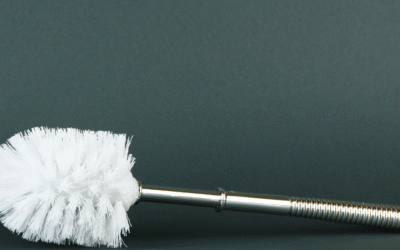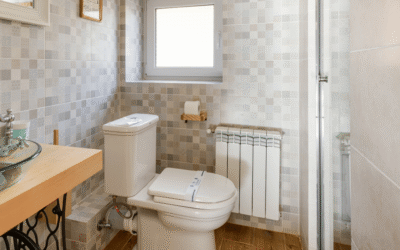Choosing the right home for a hamster is crucial for their happiness and well-being. A spacious cage allows them to explore, play, and engage in natural behaviours like burrowing and running. Experts recommend a minimum floor space of 450 square inches, but bigger is always better to accommodate their playful nature.
When selecting a hamster cage, it’s essential to consider not only the size but also the material and design. An extra large cage is particularly suitable for larger hamsters like Syrian hamsters, ensuring they have ample space to thrive. While plastic-bottomed cages with wire tops are budget-friendly and easy to clean, it’s vital to ensure the floor is solid to prevent injury. Avoid round cages as hamsters prefer corners for nesting and hiding.
Enrichment features like toys and hamster wheels are also important, as they provide mental stimulation and exercise. With various options available, finding the perfect cage that suits your budget, space, and aesthetic preferences is possible. A well-chosen cage ensures a comfortable and engaging environment for your furry friend.
- Optimal Cage Size: A minimum floor space of 450 square inches is essential for hamsters to explore and reduce stress, with larger cages always being preferable.
- Material Considerations: Choose cages with stainless steel bars and plastic bottoms for durability and easy maintenance, ensuring solid flooring to prevent injuries.
- Cage Types: Explore different styles including wire cages for ventilation, aquarium-style for burrowing, and DIY options for customisation and cost-effectiveness.
- Essential Accessories: Include adequate bedding, chew toys for dental health, exercise wheels, and secure food and water containers to enhance your hamster’s environment.
- Maintenance Routine: Perform daily spot-cleaning to maintain hygiene and weekly deep-cleaning to prevent germs, ensuring a safe and comfortable habitat.
Choosing the Right Hamster Cage
Choosing the right hamster cage is crucial for your pet’s health, happiness, and well-being. With so many options available, it can be overwhelming to decide which cage is best for your furry friend. Here are some factors to consider when selecting a hamster cage:
- Size: The cage should be large enough to provide ample space for your hamster to move around, exercise, and play. A minimum size of 24 inches long, 12 inches wide, and 12 inches tall is recommended. This ensures your hamster has enough room to explore and stay active, reducing stress and promoting overall well-being.
- Material: Hamster cages can be made of wire, plastic, or glass. Wire cages are popular, but make sure the bar spacing is safe for your hamster. For dwarf hamsters, a glass hamster cage can be a good option as it prevents escape and allows for deeper bedding. However, glass cages may not be suitable for Syrian hamsters due to their larger size and need for more ventilation.
- Ventilation: Good ventilation is essential to prevent ammonia buildup and keep your hamster healthy. Look for cages with adequate ventilation holes or mesh panels. Proper airflow helps maintain a fresh environment and reduces the risk of respiratory issues.
- Ease of Cleaning: A cage that is easy to clean is a must. Look for cages with removable trays, easy-to-clean surfaces, and minimal crevices where bedding can accumulate. This makes regular maintenance simpler and ensures a hygienic habitat for your pet.
- Safety Features: Make sure the cage has safety features such as secure latches, escape-proof doors, and no sharp edges or points. These features help prevent injuries and ensure your hamster remains safe and secure in its home.
By considering these factors, you can choose the right hamster cage that meets your pet’s needs and provides a comfortable, safe, and stimulating environment.
Important Features of Hamster Cages
Selecting the best hamster cages involves considering several key features to ensure the pet’s comfort and safety.
Size and Space
A hamster cage should provide ample space for movement and activities. A minimum floor area of 450 sq inches, such as 76cm by 40cm, is recommended, with larger options being even better. Adequate space allows hamsters to roam, reducing stress and promoting well-being.
Bar Spacing
Wire spacing in a cage should be small enough to prevent escape yet offer proper ventilation. For most hamsters, bar spacing of 6-10mm is suitable. Such spacing also aids in maintaining the cage’s structural integrity without compromising the animal’s safety.
Material and Durability
Cages made from stainless steel bars or mesh are preferable for durability. Plastic bottoms are favoured for their ease of cleaning. Wooden cages are not recommended due to potential issues with moisture and gnawing, while solid flooring prevents foot injuries.
Types of Hamster Cages
Selecting the best hamster cages involves understanding the different styles available to ensure adequate space and comfort for your pet. Each type offers unique benefits.
Cage Style Enclosures
Cage style enclosures offer excellent ventilation, making them suitable for multiple hamsters. They often feature wire designs beneficial for hanging water bottles or wheels. With easy assembly and space-saving stackability, these cages provide convenience. The solid base prevents discomfort from wired floors, enhancing overall habitat quality.
Aquarium Style Enclosures
Glass tank enclosures, also known as aquarium-style enclosures, suit those prioritising a strong, burrow-friendly habitat. The solid walls facilitate deeper bedding for digging and are often larger than typical cages, allowing ample exploration space. Although they might lack ventilation compared to wire cages, aquariums minimise escape risks, keeping your hamster secure.
DIY Options
DIY enclosures allow customisation to meet specific hamster needs. Utilising suitable materials like plastic bins or glass tanks, they can be crafted to provide substantial floor space and enrichment features. These cost-effective options often cater to unique spatial constraints, offering a creative solution for hamster habitats. Additionally, DIY options provide flexibility compared to other cages, allowing for customisation based on the hamster’s needs.
Essential Accessories for Hamster Cages
Essential accessories enhance the hamster’s habitat, providing comfort and stimulation. They contribute significantly to health and happiness, essential elements when considering the best hamster cages.
Bedding and Nest Boxes
Use dust-free wood shavings or paper bedding as recommended options. Aspen is ideal due to its hypoallergenic properties. Maintain a depth of at least six inches to allow for burrowing. Nest boxes offer a secure hiding spot, crucial for a hamster’s sense of security.
Toys and Enrichment
Hamsters thrive with hamster toys for chewing and mental stimulation, which keep teeth healthy. Chew toys are especially beneficial. A large exercise wheel offers necessary physical activity, mirroring their athletic nature in the wild for optimal enrichment.
Food and Water Containers
Secure food dishes to prevent tipping. Use a water bottle that clips to the cage wires. This ensures water remains uncontaminated and accessible, promoting the hamster’s health and well-being within its habitat.
Setting Up the Perfect Hamster Environment
Setting up the perfect hamster environment requires careful consideration of your pet’s needs and preferences. Here are some tips to help you create a happy and healthy environment for your hamster:
- Cage Placement: Place the cage in a quiet, draft-free area of your home, away from direct sunlight and predators. This helps create a stress-free environment where your hamster feels safe and secure.
- Bedding: Choose a safe and comfortable bedding material, such as paper-based bedding or aspen shavings. Avoid using pine or cedar shavings, as they can be toxic to hamsters. A good bedding depth of at least six inches allows for natural burrowing behavior.
- Temperature: Keep the cage at a comfortable temperature range of 20-24°C (68-75°F). Avoid placing the cage near heating or cooling vents, as extreme temperatures can be harmful to your hamster.
- Humidity: Maintain a humidity level of 50-60% to prevent respiratory problems. Proper humidity levels help keep your hamster’s respiratory system healthy and reduce the risk of infections.
- Lighting: Provide a photoperiod of 12 hours of light and 12 hours of darkness to simulate a natural day-night cycle. This helps regulate your hamster’s internal clock and promotes healthy sleep patterns.
By following these tips, you can set up the perfect hamster environment that caters to your pet’s needs and ensures their well-being.
Cage Placement and Safety
When placing the cage, make sure it is:
- Away from Direct Sunlight: Direct sunlight can cause overheating, which is dangerous for hamsters. Place the cage in a shaded area to keep it cool.
- Away from Drafts: Drafts can cause respiratory problems in hamsters. Ensure the cage is in a draft-free location to maintain a stable temperature.
- Out of Reach of Children and Pets: Children and pets may disturb or harm your hamster. Place the cage in a secure area where it won’t be easily accessed by curious hands or paws.
- On a Stable and Level Surface: To prevent the cage from tipping over, place it on a stable and level surface. This ensures the safety of your hamster and prevents accidents.
- Near a Power Source: If you use accessories such as heat lamps or exercise wheels that require electricity, place the cage near a power source for easy access.
By considering these placement and safety tips, you can create a secure and comfortable environment for your hamster.
Maintaining a Clean and Safe Environment
A tidy hamster’s cage plays a crucial role in a hamster’s health and comfort. Regular maintenance prevents odours, reduces stress, and keeps harmful bacteria at bay.
Daily Spot Cleaning
Hamster owners should perform daily spot cleaning by removing soiled bedding and uneaten food. Spot-cleaning prevents unpleasant odours and minimises your pet’s exposure to harmful bacteria. Address smaller messes to keep the cage environment coherent with hamster hygiene needs.
Deep Cleaning
Weekly deep cleaning involves emptying the cage, scrubbing all surfaces with mild disinfectant, and replacing old bedding. Thorough cleaning prevents the buildup of harmful germs and creates a fresh, inviting space. Ensure everything is dry before reintroducing the hamster to the cage.
Choosing the best cage for a hamster is crucial for their well-being and happiness. With numerous options available, it’s essential to consider factors such as size, material, and design. A spacious cage with a minimum floor area of 450 square inches ensures the hamster has ample room to move and explore. Wire spacing between 6-10mm offers security and ventilation, while durable materials like stainless steel and plastic enhance longevity and ease of maintenance.
Incorporating enrichment features like toys and exercise wheels provides necessary mental and physical stimulation. Regular cleaning and maintenance play a vital role in creating a safe and pleasant environment. By carefully selecting a cage and accessories that meet these requirements, owners can ensure their hamster enjoys a healthy and fulfilling life.
Hamster Health and Hygiene
Hamsters are prone to various health problems, and maintaining good hygiene is essential to prevent the spread of diseases. Here are some tips to keep your hamster healthy and clean:
- Clean the Cage Regularly: Remove soiled bedding, clean food and water dishes, and disinfect all surfaces with a pet-safe cleaning solution. Regular cleaning helps prevent the buildup of harmful bacteria and keeps the cage environment fresh.
- Provide a Balanced Diet: Offer a high-quality commercial hamster food, supplemented with fresh fruits and vegetables. A balanced diet ensures your hamster gets the necessary nutrients for optimal health.
- Ensure Access to Fresh Water: Change the water bottle or bowl daily, and make sure it is clean and free of bacteria. Fresh water is essential for your hamster’s hydration and overall health.
- Monitor Your Hamster’s Health: Check for signs of illness, such as lethargy, loss of appetite, or changes in stool or urine output. Early detection of health issues allows for prompt treatment and better outcomes.
By following these hygiene tips, you can help keep your hamster healthy and happy.
Common Health Problems in Hamsters
Hamsters are prone to various health problems, including:
- Respiratory Problems: Pneumonia, bronchitis, and other respiratory infections can be caused by poor ventilation, dirty cages, or bacterial infections. Ensure good ventilation and regular cleaning to prevent these issues.
- Dental Problems: Overgrown teeth, abscesses, and other dental issues can be caused by poor diet, lack of chew toys, or genetic factors. Provide chew toys to help keep your hamster’s teeth healthy and prevent overgrowth.
- Tumors: Hamsters can develop benign or malignant tumors, which may require surgical removal. Regular health checks can help detect tumors early.
- Parasites: Hamsters can be infested with internal parasites, such as worms, and external parasites, like mites and fleas. Maintain good hygiene and consult a vet if you suspect a parasite infestation.
- Infections: Bacterial, viral, and fungal infections can be caused by poor hygiene, dirty cages, or contact with infected animals. Regular cleaning and monitoring can help prevent infections.
By being aware of these common health problems and taking preventive measures, you can help ensure your hamster remains healthy and happy.
What is the minimum recommended floor space for a hamster cage?
The minimum recommended floor space for a hamster cage is 450 square inches. A larger area is preferred as it provides more room for the hamster to explore and exercise, promoting better physical and mental well-being.
Why should round cages be avoided for hamsters?
Round cages should be avoided as they can disorient hamsters and compromise their safety. A solid floor is essential to prevent injury, ensuring the hamster can move around comfortably without the risk of getting their feet caught.
What are the best materials for a hamster cage?
Stainless steel bars or mesh are ideal for durability and ventilation, paired with a plastic bottom for easy cleaning. It’s advised to avoid wooden cages due to moisture issues and the potential for hamsters to gnaw on the wood.
How can aquarium-style enclosures benefit hamsters?
Aquarium-style enclosures offer a burrow-friendly environment with deeper bedding, which is great for hamsters that love to dig and explore. However, ensure there is adequate ventilation as they can trap heat without proper airflow.
Why are enrichment features important in a hamster cage?
Enrichment features such as toys and wheels provide mental stimulation and necessary physical exercise. These features help prevent boredom, stress, and obesity, contributing to the overall happiness and health of the hamster.
How often should a hamster cage be cleaned?
Daily spot cleaning is essential to remove soiled bedding and uneaten food. A deep cleaning should be done weekly, which involves scrubbing surfaces with a mild disinfectant and replacing old bedding to maintain a fresh, healthy environment.
What type of bedding is recommended for hamsters?
Dust-free wood shavings, particularly aspen, are highly recommended for bedding. They should be kept at a depth of at least six inches to satisfy the hamster’s natural burrowing instincts and provide a comfortable resting area.
It is important to avoid using timothy hay as bedding, as its sharpness can potentially injure a hamster’s eyes.
Can DIY cages be a good option for hamsters?
DIY cages can be a cost-effective and customisable solution, allowing owners to design a habitat tailored to their hamster’s specific needs. Ensure the materials used are safe and provide adequate ventilation and space for the hamster to thrive.












